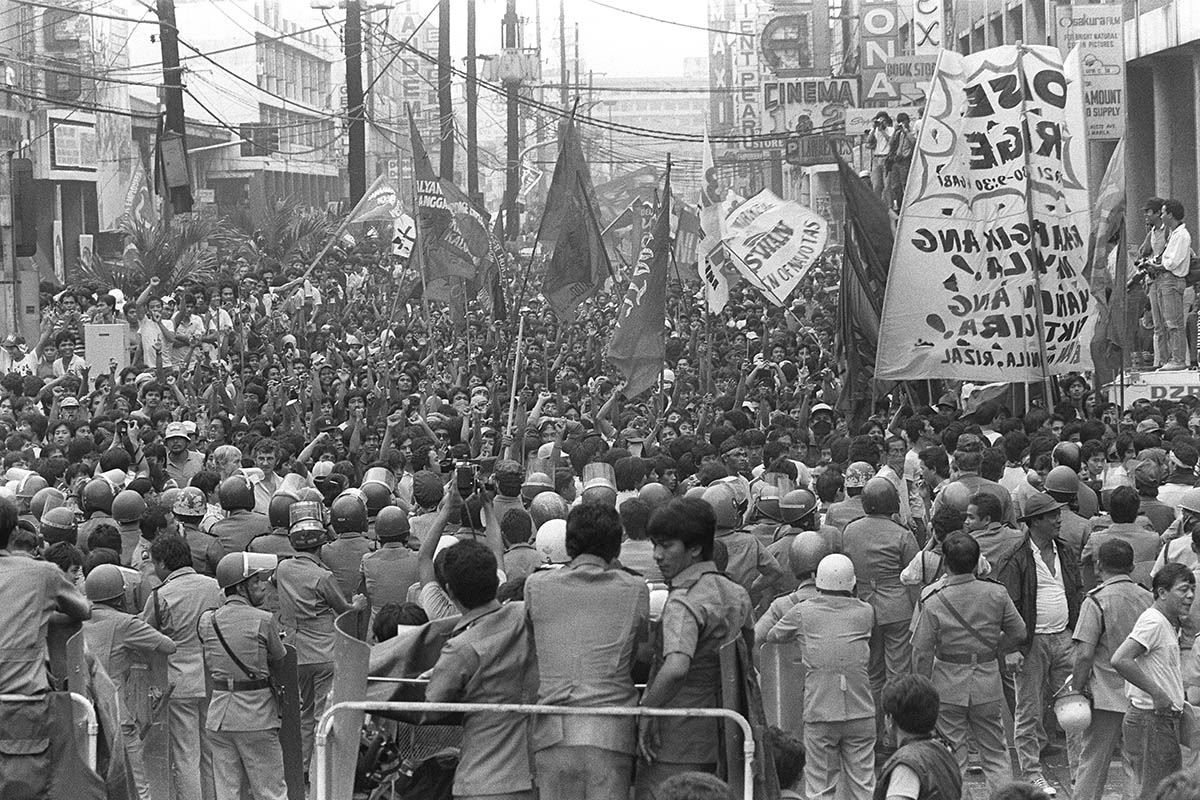It was February 1986 when a decision had to be made by then Philippine President, Ferdinand Marcos, through a desperate telephone conversation with Senator Paul Laxalt at the White House. "Senator," a jaded Marcos asked, "What do you think? Should I step down?"
Laxalt replied, "I think you should cut, and cut cleanly. I think the time has come."
There was a long pause and finally, Marcos said, "I am so very, very disappointed."
32 years ago, hundreds of thousands of Filipinos staged a four-day revolution to overthrow President Ferdinand Marcos. The protesters blocked Manila's main street, the Epifanio de los Santos Avenue, or EDSA as it's more commonly known, and despite repeated threats from the President they refused to leave. After just four days of protests, President Marcos stepped down. And those four days have affected the Philippines ever since.
The journey to revolution
The pathway towards the Philippine’s greatest revolution goes all the way back even before February 1986.
At that point, President Marcos had been in power for 20 years, with most of his presidency under martial law. One of the few people who openly challenged him was Senator Benigno “Ninoy” Aquino - who, after being imprisoned for seven years, lived in self-imposed exile in the United States. When Aquino decided to come back to Manila in 1983, he was assassinated while descending the steps of his plane. This was the very incident that triggered the genesis of the revolution.
In the following months, various opposition movements gathered momentum and rallied around Aquino's widow, Corazon, or better known as Cory. These movements were geared towards wanting to replace Marcos with Cory. In a bid to ease the rising tensions in the country, President Marcos decided to hold snap elections. When he won, hardly anyone believed the election results were not rigged by his administration.
Matters became more serious when General Fidel Ramos, a senior military official and Juan Ponce Enrile, the defence secretary, both announced their opposition to the Marcos regime. That was when the crowds started pouring onto EDSA, further boosted by Cardinal Jaime Sin’s powerful message that was aired on the Manila Archdiocese radio station, Radyo Veritas. It was an empowering demonstration that aimed to oust Marcos peacefully with the intervention of the Catholic Church.
By then, the US had urged Ferdinand Marcos to step down, which was truly a huge blow for the Philippines leader. After the phone call to Paul Laxalt, Marcos realised his time was up, and fled the country on 25 February, 1986.
On the same day, Corazon Aquino took the presidential oath of office, administered by Supreme Court Associate Justice, Claudio Teehankee at Club Filipino located in San Juan. Aquino was proclaimed 11th President of the Republic of the Philippines and was also the first female president of the country.

32 years on
Today, the Philippines celebrates the 32nd commemoration of the EDSA People Power anniversary. As the National Historic Commission (NHCP) of the Philippines readies its EDSA commemoration with the theme - “EDSA 2018: Effecting Change Towards Strengthened Democracy” - some groups have also planned protests and rallies to mark this momentous day.
However, according to CNN Philippines, President Rodrigo Duterte, who missed last year's anniversary event, will also not attend the commemoration this year as confirmed by presidential spokesman, Harry Roque.
In his message from Malacañang, Duterte said “The enduring symbol of our determination is to fight for what is right and to defend and uphold our cherished democratic values."
"May this occasion foster unity and solidarity as we pursue our hopes and aspirations for our nation. Let us further enrich our democracy by empowering our citizenry, defending their rights and strengthening the institutions that safeguard their freedoms," he added.
Although the exhilaration of that notable day 32 years ago has waned over time, Filipinos today continue to strive for even more freedoms under their democracy by using the 1986 revolution as inspiration.
“Once we remember how powerfully effective the freedoms of democracy can be, perhaps we would try using the Constitution’s People Power clauses first in our pursuit of needed changes, instead of once again flirting with dictatorship, or Charter change,” said Bryan Dennis Gabito Tiojanco, a J.S.D. candidate at Yale Law School in a commentary on Inquire.Net.
